Walking back to our campsite, I came across this beautiful garter snake. It was willing to sit still while I took a portrait photograph.
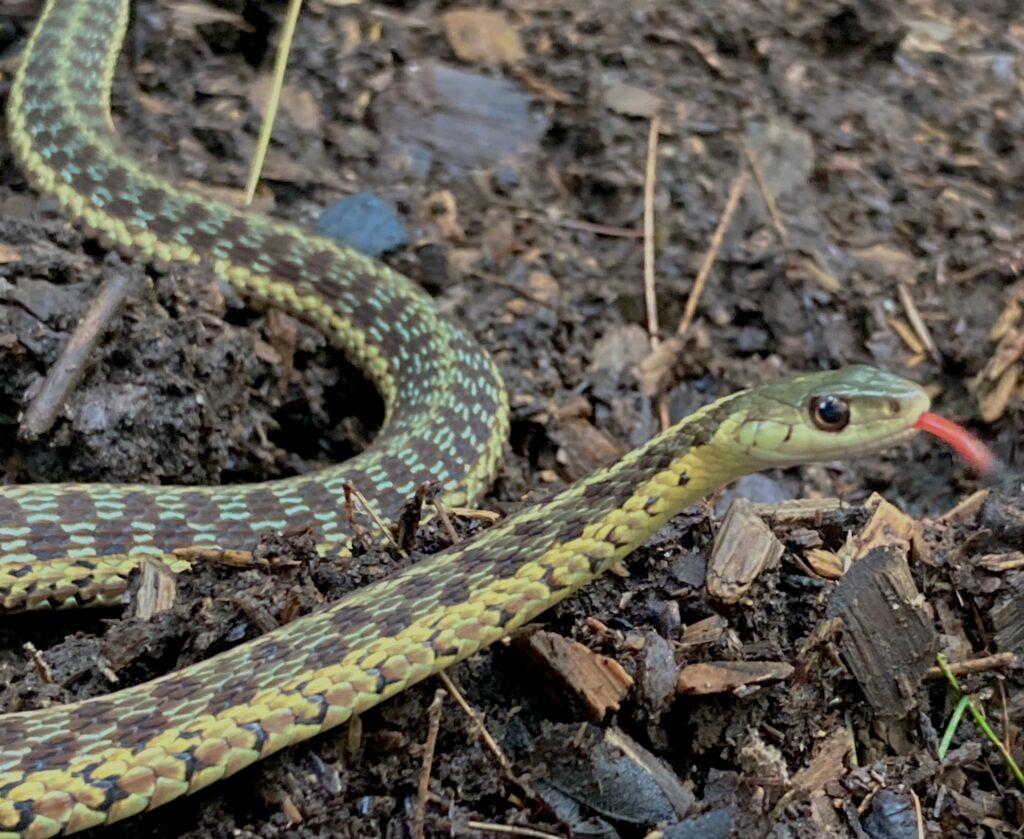
Yet Another Unitarian Universalist
A postmodern heretic's spiritual journey
Walking back to our campsite, I came across this beautiful garter snake. It was willing to sit still while I took a portrait photograph.

On Friday when I went for a walk in Whitney Woods here in Cohasset, the marshes were silent. On Saturday, I heard a chorus of frogs calling from a couple of marshes and one vernal pool. When I returned on Sunday, the temperature had dropped 20 degrees, from about 54 degrees to the mid-30s. There were a lot fewer frogs calling on Sunday, but some were still singing away. They sounded like a bunch of ducks gabbling together.
Whenever I tried to get close enough to see them, all I ever saw was a circular ripple where a frog slipped underwater. Nevertheless, identification was relatively easy. Here’s the description of the voice of the Wood Frog (Rana sylvatica) in the Peterson Field Guide to Reptiles and Amphibians: “A hoarse clacking sound suggesting the quack of a duck.” Another source says: “from a distance, a chorus [of Wood Frogs] sounds like a gathering of miniature ducks quacking.”
I’ll let you decide if they sound like ducks or not. Here’s my lo-fi audio recording:
Coe State Park is a magical place, and I decided to return there one last time before we move to Massachusetts. I left the park headquarters at 11:50 a.m., and began hiking up Monument Trail. It was slow going with a full pack, but even at my slow pace I overtook an amateur herpetologist who showed my a Southern Alligator Lizard he was photographing. Naturalists walk even more slowly than old backpackers.
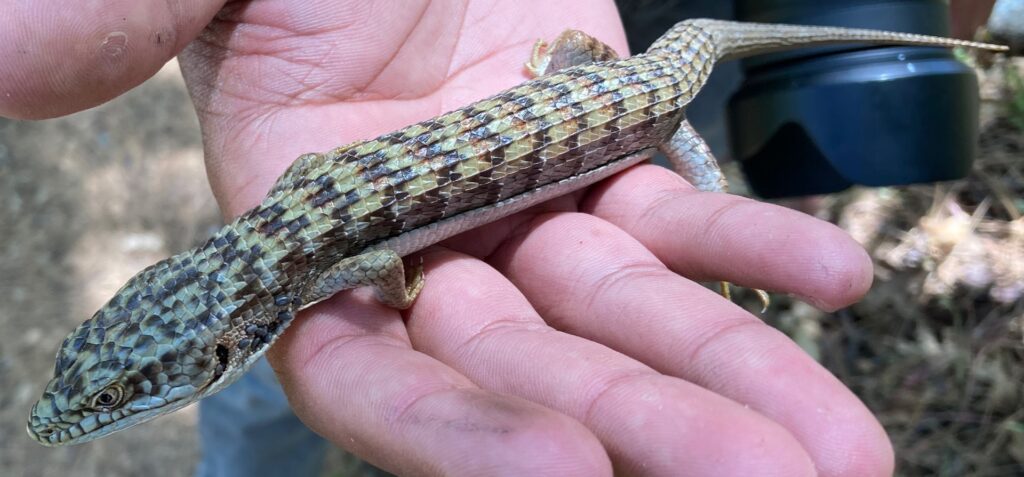
After four-tenths of a mile, I turned onto Hobbs Road. As I passed the Frog Lake campsite, I stopped for a moment to talk with a parent and child who were just setting up camp there. I asked the child if they enjoyed Frog Lake, and they told me they liked throwing rocks at the sunfish to “bonk them on the head.” I explained that the Bluegills were probably close to shore guarding nesting sites, and that it wasn’t a good idea to throw rocks at them when they were trying to raise the next generation of fish. The child was not fully convinced, but their parent, sotto voce, thanked me for reinforcing that message.
I climbed up to Middle Ridge Trail, for a total elevation gain of 800 feet in about 2 miles, turned right on the Middle Ridge Trail, and walked down to the Two Oaks campsite. I laid out my ground cloth and sleeping bag, emptied my pack of everything except food and water, then went back up to Hobbs Road. As I walked down the switchbacks of Hobbs Road, I admired the view of Blue Ridge rising steeply up on the other side of the Middle Fork of Coyote Creek.
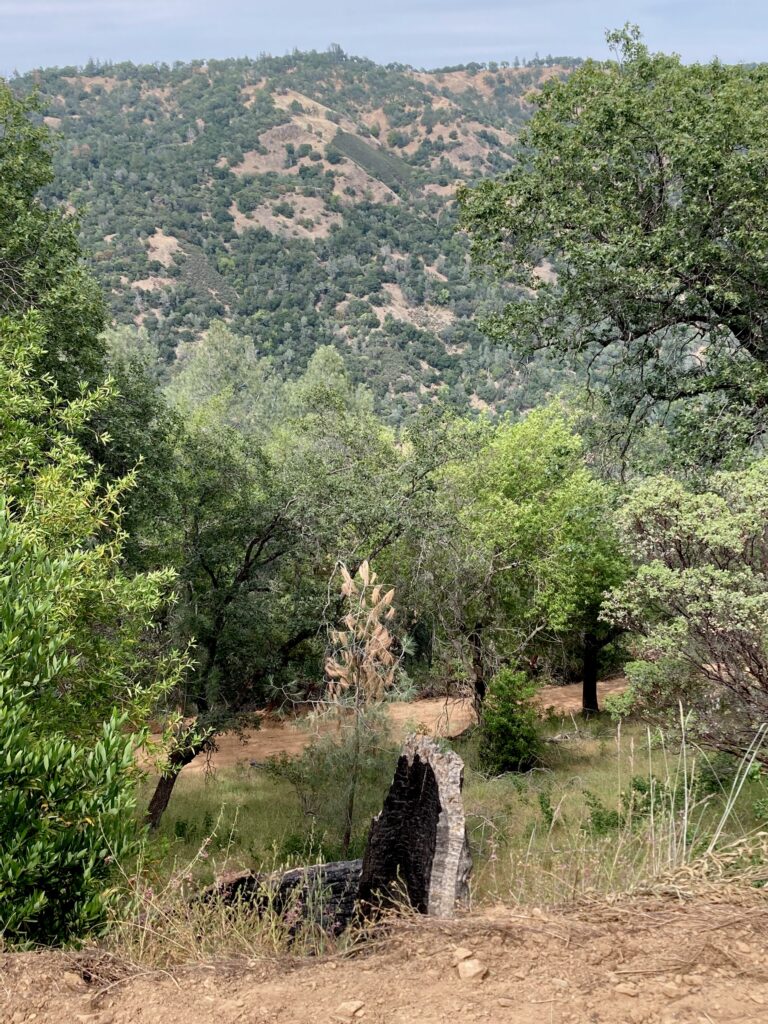
Although it’s late in the season, there were still quite a few flowers in bloom. Patches of Elegant Clarkia (Clarkia unguiculata) made a faint pink wash on some steep hillsides. Yellow Mariposa Lily (Calochortus luteus), Butterfly Mariposa Lily (Calochortus venustus), and Globe Lily (Calochortus albus) stood out in the dry brown grasses. Dramatic white clusters of flowers covered California Buckeye trees (Aesculus californica). I had hoped to hike all the way down to Coyote Creek, but it was getting late and my legs were tired. Discretion being the better part of valor, about two thirds of the way to the creek I decided to turn around.
Back at the campsite, I could hear Wild Turkeys gobbling up the hillside above, and down towards Frog Lake. One got louder and louder, and a big tom walked within 50 feet of the campsite, stalking angrily along, presumably looking for a rival to confront. I made dinner, walked down to Pajahuello Spring to fill up my water bottles, and then sat and enjoyed the evening. I was in my sleeping bag before dark. I awoke later in the evening to see the Big Dipper overhead, but fell back asleep almost immediately.
I’m visiting Massachusetts, and stopped at Great Meadows National w/ildlife Refuge, where I saw this Northern Watersnake:
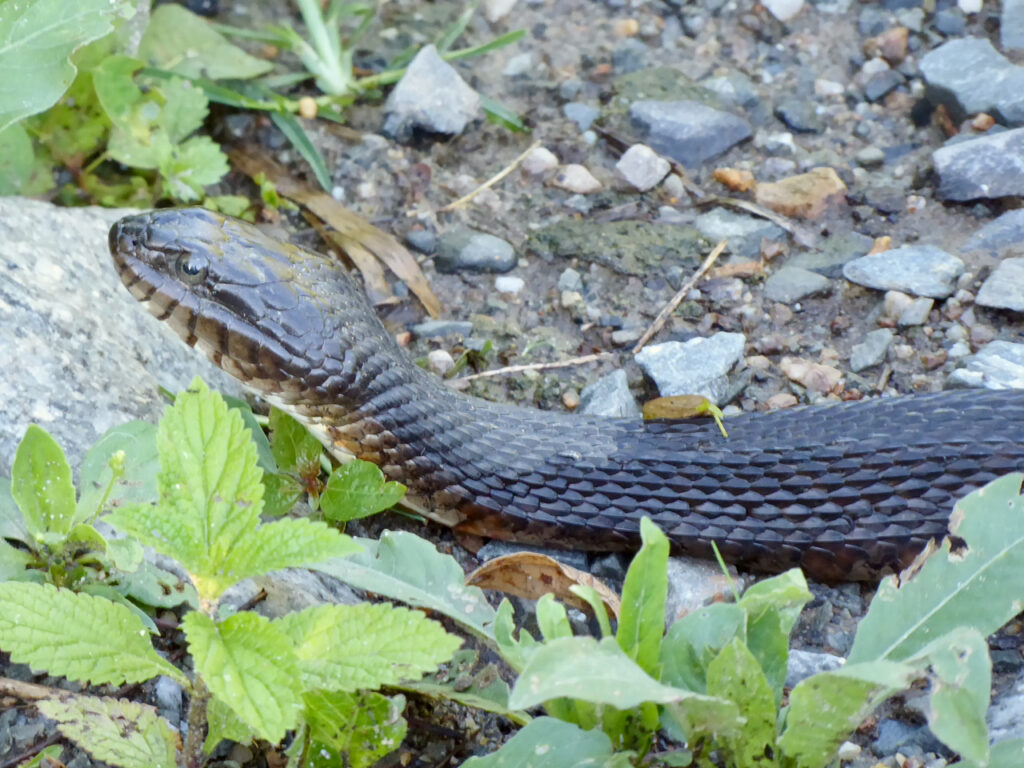
Here’s an interesting citizen science project….
“The Newt Patrol is a group of citizen scientists in the South Bay. We have been surveying newt roadkills near Lexington Reservoir since 2017. We have documented over 10,000 dead newts so far, representing one of the highest rates of amphibian roadkill mortality known worldwide. This project aims to raise awareness of this problem and provide a rigorous database that could be used by the authorities to implement mitigation measures.”
You can see their Web site here.
This afternoon I was walking in Purissima Creek Redwoods Open Space Preserve, through Douglas Fir woodlands, along a ridge that was about 1,400 feet aboe sea level. I happened to look down at my feet, and there was a — well, no, it wasn’t a lizard, it was some kind of salamander.
Sometimes it pays to walk slowly and deliberately. I got down on my knees to look more closely.
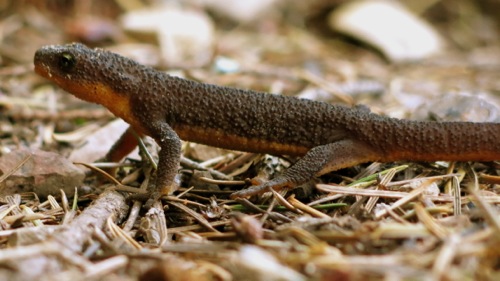
I haven’t seen seen a salamander since I moved to California more than five years ago, so I stopped to watch it for a while. I placed a quarter on the ground, to give a sense of scale in the photos I was taking. The salamander obligingly stepped right on the quarter:
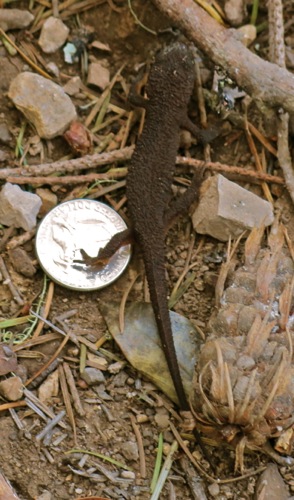
It was fun to watch it walk — it had that rolling, deliberate salamander gait, so very different from the quicker-than-the-eye sprinting done by lizards. Eventually, it walked off the trail and disappeared into the leaf litter.
When I got home, I looked on the California Herps online identification guide. I’m pretty sure it was a Rough-skinned Newt (Taricha granulosa). Another possibility would be the Red-bellied Newt (Taricha rivularis) — but the eye of my newt showed some whitish yellow, while T. Rivularis has uniformly dark eyes.
It was a perfect New England summer day — breezy, about 85 degrees, gentle blue sky — so Carol and I decided to take a walk at Great Meadows National Wildlife Refuge this afternoon.
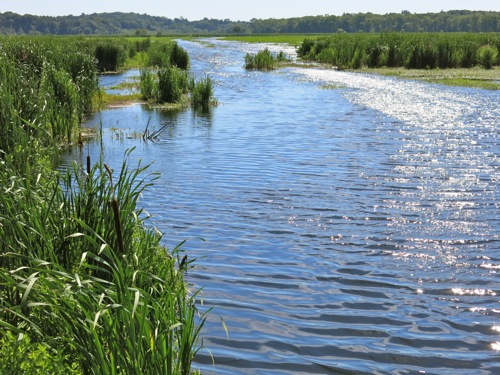
Above: Great Meadows National Wildlife Refuge, Concord, Mass., looking north over the lower impoundment
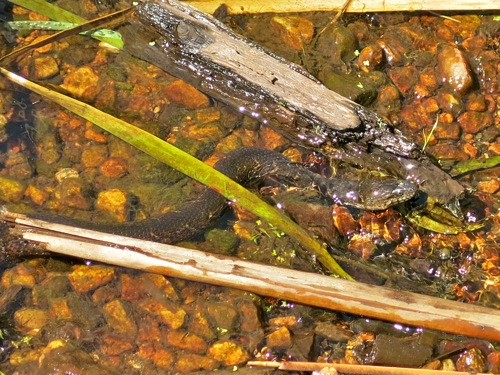
Above: Northern Water Snake (Nerodia sipedon)
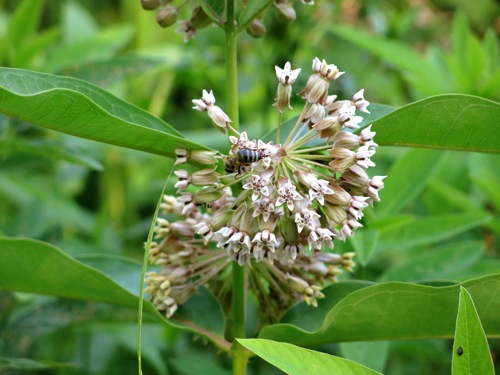
Above: Common Milkweed (Asclepias syriaca), with unidentified pollinator